1.Identification
1.1 GHS Product identifier
| Product name | bromacil |
|---|
1.2 Other means of identification
| Product number | - |
|---|---|
| Other names | 5-Bromo-3-(sec-butyl)-6-methylpyrimidine-2,4(1H,3H)-dione |
1.3 Recommended use of the chemical and restrictions on use
| Identified uses | For industry use only. |
|---|---|
| Uses advised against | no data available |
1.4 Supplier's details
| Company | MOLBASE (Shanghai) Biotechnology Co., Ltd. |
|---|---|
| Address | Floor 4 & 5, Building 12, No. 1001 North Qinzhou Road, Xuhui District, Shanghai, China |
| Telephone | +86(21)64956998 |
| Fax | +86(21)54365166 |
1.5 Emergency phone number
| Emergency phone number | +86-400-6021-666 |
|---|---|
| Service hours | Monday to Friday, 9am-5pm (Standard time zone: UTC/GMT +8 hours). |
2.Hazard identification
2.1 Classification of the substance or mixture
Acute toxicity - Oral, Category 4
Skin irritation, Category 2
Eye irritation, Category 2
Specific target organ toxicity – single exposure, Category 3
Hazardous to the aquatic environment, short-term (Acute) - Category Acute 1
Hazardous to the aquatic environment, long-term (Chronic) - Category Chronic 1
2.2 GHS label elements, including precautionary statements
| Pictogram(s) | 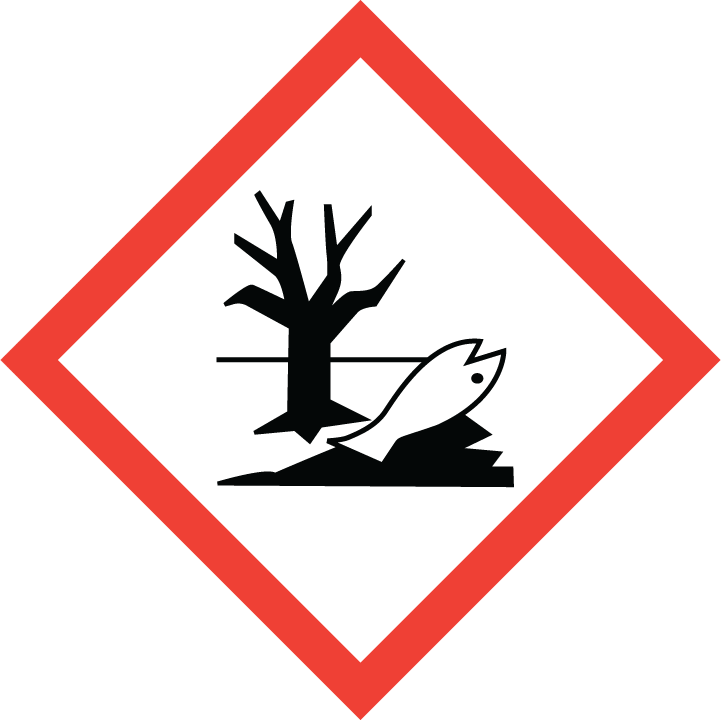 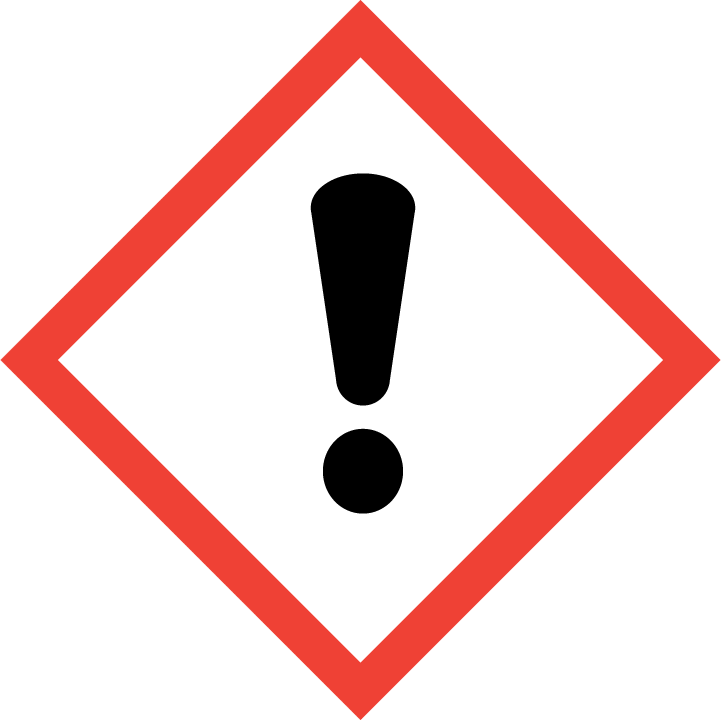 |
|---|---|
| Signal word | Warning |
| Hazard statement(s) | H302 Harmful if swallowed H315 Causes skin irritation H319 Causes serious eye irritation H335 May cause respiratory irritation H400 Very toxic to aquatic life H410 Very toxic to aquatic life with long lasting effects |
| Precautionary statement(s) | |
| Prevention | P264 Wash ... thoroughly after handling. P270 Do not eat, drink or smoke when using this product. P280 Wear protective gloves/protective clothing/eye protection/face protection. P261 Avoid breathing dust/fume/gas/mist/vapours/spray. P271 Use only outdoors or in a well-ventilated area. P273 Avoid release to the environment. |
| Response | P301+P312 IF SWALLOWED: Call a POISON CENTER/doctor/…if you feel unwell. P330 Rinse mouth. P302+P352 IF ON SKIN: Wash with plenty of water/... P321 Specific treatment (see ... on this label). P332+P313 If skin irritation occurs: Get medical advice/attention. P362+P364 Take off contaminated clothing and wash it before reuse. P305+P351+P338 IF IN EYES: Rinse cautiously with water for several minutes. Remove contact lenses, if present and easy to do. Continue rinsing. P337+P313 If eye irritation persists: Get medical advice/attention. P304+P340 IF INHALED: Remove person to fresh air and keep comfortable for breathing. P312 Call a POISON CENTER/doctor/…if you feel unwell. P391 Collect spillage. |
| Storage | P403+P233 Store in a well-ventilated place. Keep container tightly closed. P405 Store locked up. |
| Disposal | P501 Dispose of contents/container to ... |
2.3 Other hazards which do not result in classification
none
3.Composition/information on ingredients
3.1 Substances
| Chemical name | Common names and synonyms | CAS number | EC number | Concentration |
|---|---|---|---|---|
| bromacil | bromacil | 314-40-9 | none | 100% |
4.First-aid measures
4.1 Description of necessary first-aid measures
General advice
Consult a physician. Show this safety data sheet to the doctor in attendance.
If inhaled
Fresh air, rest.
In case of skin contact
Remove contaminated clothes. Rinse and then wash skin with water and soap.
In case of eye contact
First rinse with plenty of water for several minutes (remove contact lenses if easily possible), then refer for medical attention.
If swallowed
Give one or two glasses of water to drink. Refer for medical attention .
4.2 Most important symptoms/effects, acute and delayed
Exposure Routes: inhalation, ingestion, skin and/or eye contact Symptoms: Irritation eyes, skin, upper respiratory system Target Organs: Eyes, skin, respiratory system, thyroid (NIOSH, 2016)
4.3 Indication of immediate medical attention and special treatment needed, if necessary
Skin decontamination: Skin contamination should he treated promptly by washing with soap and water. Contamination of the eyes should be treated immediately by prolonged flushing of the eyes with large amounts of clean water. If dermal or ocular irritation persists, medical attention should be, obtained without delay. /Herbicides/
5.Fire-fighting measures
5.1 Extinguishing media
Suitable extinguishing media
Bromacil may be ignited by heat or open flame. ... Use dry chemical, carbon dioxide, water spray, or foam extinguishers. ... From a secure, explosion-proof location, use water spray to coll exposed containers. ...
5.2 Specific hazards arising from the chemical
no data available
5.3 Special protective actions for fire-fighters
Wear self-contained breathing apparatus for firefighting if necessary.
6.Accidental release measures
6.1 Personal precautions, protective equipment and emergency procedures
Use personal protective equipment. Avoid dust formation. Avoid breathing vapours, mist or gas. Ensure adequate ventilation. Evacuate personnel to safe areas. Avoid breathing dust. For personal protection see section 8.
6.2 Environmental precautions
Do NOT let this chemical enter the environment. Sweep spilled substance into covered containers. If appropriate, moisten first to prevent dusting. Carefully collect remainder. Then store and dispose of according to local regulations. Personal protection: particulate filter respirator adapted to the airborne concentration of the substance.
6.3 Methods and materials for containment and cleaning up
Remove all ignition sources. Absorb liquid containing Bromacil in vermiculite, dry sand, earth, or similar material. Collect powdered material in the most convenient and safe manner adn deposit in sealed containers. Ventilate area of spill or leak after clean-up is complete. ...
7.Handling and storage
7.1 Precautions for safe handling
Avoid contact with skin and eyes. Avoid formation of dust and aerosols. Avoid exposure - obtain special instructions before use.Provide appropriate exhaust ventilation at places where dust is formed. For precautions see section 2.2.
7.2 Conditions for safe storage, including any incompatibilities
Keep in a well-ventilated room. Separated from strong oxidants and strong acids.Do not contaminate water, other pesticides, fertilizer, food or feed in storage. Store in original container. Keep tightly closed in a dry, cool and wellventilated place. Keep out of the reach of children. /DuPont Hyvar X Herbicide/
8.Exposure controls/personal protection
8.1 Control parameters
Occupational Exposure limit values
Recommended Exposure Limit: 10 Hour Time-Weighted Average: 1 ppm (10 mg/cu m).
Biological limit values
no data available
8.2 Appropriate engineering controls
Handle in accordance with good industrial hygiene and safety practice. Wash hands before breaks and at the end of workday.
8.3 Individual protection measures, such as personal protective equipment (PPE)
Eye/face protection
Safety glasses with side-shields conforming to EN166. Use equipment for eye protection tested and approved under appropriate government standards such as NIOSH (US) or EN 166(EU).
Skin protection
Wear impervious clothing. The type of protective equipment must be selected according to the concentration and amount of the dangerous substance at the specific workplace. Handle with gloves. Gloves must be inspected prior to use. Use proper glove removal technique(without touching glove's outer surface) to avoid skin contact with this product. Dispose of contaminated gloves after use in accordance with applicable laws and good laboratory practices. Wash and dry hands. The selected protective gloves have to satisfy the specifications of EU Directive 89/686/EEC and the standard EN 374 derived from it.
Respiratory protection
Wear dust mask when handling large quantities.
Thermal hazards
no data available
9.Physical and chemical properties
| Physical state | white to beige crystalline solid |
|---|---|
| Colour | White crystalline solid |
| Odour | Odorless |
| Melting point/ freezing point | 157-160oC |
| Boiling point or initial boiling point and boiling range | 411oC |
| Flammability | Noncombustible Solid, but may be dissolved in flammable liquids.Not combustible. Liquid formulations containing organic solvents may be flammable. Gives off irritating or toxic fumes (or gases) in a fire. |
| Lower and upper explosion limit / flammability limit | no data available |
| Flash point | no data available |
| Auto-ignition temperature | no data available |
| Decomposition temperature | no data available |
| pH | no data available |
| Kinematic viscosity | no data available |
| Solubility | 0.08 % at 25°C (NIOSH, 2016) |
| Partition coefficient n-octanol/water (log value) | log Kow = 2.11 |
| Vapour pressure | 0.0008 mm Hg at 100°C (NIOSH, 2016) |
| Density and/or relative density | 1.55 |
| Relative vapour density | no data available |
| Particle characteristics | no data available |
10.Stability and reactivity
10.1 Reactivity
no data available
10.2 Chemical stability
Stable to 0 deg F, but water-soluble formulations become less soluble with exposed to air.
10.3 Possibility of hazardous reactions
Active ingredient and dry formulations are non-flammable; the liquid formulation (HYVAR-XL) is a combustible mixture which should be kept away from heat and open flame.BROMACIL is incompatible with the following: Strong acids (decomposes slowly), oxidizers, heat, sparks, open flames (NIOSH, 2016).
10.4 Conditions to avoid
no data available
10.5 Incompatible materials
Strong acids (decomposes slowly), oxidizers, heat, sparks, open flames.
10.6 Hazardous decomposition products
... Decomposes slowly in strong acids.
11.Toxicological information
Acute toxicity
- Oral: LD50 Rat male oral 5200 mg/kg
- Inhalation: LC50 Rat inhalation >4.8 mg/L air/4 hr
- Dermal: LD50 Rabbit percutaneous >5000 mg/kg
Skin corrosion/irritation
no data available
Serious eye damage/irritation
no data available
Respiratory or skin sensitization
no data available
Germ cell mutagenicity
no data available
Carcinogenicity
Cancer Classification: Group C Possible Human Carcinogen
Reproductive toxicity
no data available
STOT-single exposure
no data available
STOT-repeated exposure
no data available
Aspiration hazard
no data available
12.Ecological information
12.1 Toxicity
- Toxicity to fish: LC50; Species: Lepomis macrochirus (Bluegill sunfish); Concentration: 71 ppm for 48 hr /Conditions of bioassay not specified in source examined
- Toxicity to daphnia and other aquatic invertebrates: EC50; Species: Daphnia magna (Water Flea) age <24 hr; Conditions: freshwater, static; Concentration: 121000 ug/L for 48 hr (95% confidence interval: 111000-148000 ug/L); Effect: intoxication, immobilization /96.6% purity
- Toxicity to algae: EC50; Species: Pseudokirchneriella subcapitata (Green Algae); Conditions: freshwater, static; Concentration: 6.8 ug/L for 5 days (95% confidence interval: 5.9-7.8 ug/L); Effect: population abundance /96.5% purity
- Toxicity to microorganisms: no data available
12.2 Persistence and degradability
AEROBIC: The microbial degradation of bromacil in aerobic soil is slow with a half-life of 275 days in silty clay loam soil incubated for up to 12 months. Carbon dioxide was the major degradate with 5-bromo-6-methyluracil, 5-bromo-3-(alpha-hydroxymethylpropyl)-6-methyluracil, 5-bromo-3-sec-butyl-6-hydroxymethyluracil, 5-bromo-3-(2-hydroxy-1-methylpropyl)-6-methyluracil and 3-sec-butyl-6-methyluracil found as minor metabolites(1). Bromacil was degraded within 4 to 6 months when single applications were made to soil; however, when two applications were used, bromacil persisted in the top 75 mm of soil for nearly a year(2). The mineralization half-life of (14)C-labeled bromacil, incubated in loamy sand and mucky peat soils, was estimated to range from 5,429 to 46,200 days(3). Bromacil estimated half-life is 12-46 days in two New Zealand soils; Motupiko silt loam (pH 5.7, 24% sand, 57% silt, 19% clay, 2.4% organic content) Waikiwi silt loam (pH 5.5, 7% sand, 69% silt, 24% clay, 3.9% organic content)(4).
12.3 Bioaccumulative potential
The bioconcentration of bromacil in bluegill sunfish (Lepomis macrochirus) was studied over a 28-day period using flow-through conditions(1). Bluegill sunfish exposed to 10.6 ppm bromacil had BCF values for muscle, viscera, carcass, and whole fish of 49, 72, 22, and 26.5, respectively(1). At 1.0 ppm, maximum BCF values were 4.6, 8.3, 2.2, and 2.8 for muscle, viscera, carcass, and whole fish, respectively(1). Depuration was rapid, with >96% of the accumulated residues eliminated from the fish tissues by day 3 of the depuration period. A BCF of 3.2 was measured in fathead minnow(2). A log BCF of 0.35242 in bluegill sunfish exposed for 28 days has also been reported(3), corresponding to a BCF of 2.20(SRC). According to a classification scheme(4), these BCF values suggest that bioconcentration in aquatic organisms is low. [
12.4 Mobility in soil
Bromacil is very mobile in sand, sandy loam, clay loam and silt loam soils; aged bromacil residues are very mobile in silt loam soils(1). Extensive data exists as evidence that bromacil leaches to ground water as a result of normal agricultural use(1). An average Koc value of 23 was determined from experimental values determined in 8 soils and 4 sediments(2). Koc values of 25 to 50 for for Israeli soils(3), 55 to 126(4), 46 to 93 for 7 sandy Florida soils(5), and 76 to 129 for a mucky peat and a loamy sand Oregon soils incubated at temperatures of 4 and 25°C(6) have been reported. Koc values in sand (FL), sandy loam (CA), clay loam (MD), and silt loam (DE) were 12, 33, 2.3, and 14, respectively(7). According to a classification scheme(8), these Koc values suggest that bromacil is expected to have very high to moderate mobility in soil. In soil column leaching studies, bromacil readily leached from loess and sandy soils, but was retained in organic-rich soils(6). As the pH increased from 3 to 12, less adsorption of bromacil to Ca-montmorillonite was measured(4). In 7 sandy soils, a rainfall of 20-23 cm displaced over 96% of applied bromacil(5). Koc values were slightly higher at lower temperatures(6). Maximum bromacil concentrations of 1.25 ppm were detected in groundwater (depths of 4.5-6 meters) three months after the herbicide was applied to a surface of Lakeland, FL sandy soil bearing scrub vegetation of small oaks and poor grasses(9). The pKa of bromacil is 9.30(10), indicating that this compound will exist partially in the anion form in the environment and anions generally do not adsorb more strongly to soils containing organic carbon and clay than their neutral counterparts(11). Desorption of bromacil from Cuban soils were reported as 51.98 and 67.00% from a red ferralitic soil and a brown plastic soil, respectively; the specific adsorption constants are 2.89 and 23.9 ug/g, respectively(12). Adsorption coefficients 1.79 and 4.59 for Motupiko topsoil (1-10 cm) and subsoil (40-50 cm), respectively, and 1.57 for Waikiwi topsoil (1-10 cm) have been reported for two Wakefield, Nelson, New Zealand soils. Soil characteristics are as follows: Motupiko silt loam (pH 5.7, 24% sand, 57% silt, 19% clay, 2.4% organic content) Waikiwi silt loam (pH 5.5, 7% sand, 69% silt, 24% clay, 3.9% organic content)(13).
12.5 Other adverse effects
no data available
13.Disposal considerations
13.1 Disposal methods
Product
The material can be disposed of by removal to a licensed chemical destruction plant or by controlled incineration with flue gas scrubbing. Do not contaminate water, foodstuffs, feed or seed by storage or disposal. Do not discharge to sewer systems.
Contaminated packaging
Containers can be triply rinsed (or equivalent) and offered for recycling or reconditioning. Alternatively, the packaging can be punctured to make it unusable for other purposes and then be disposed of in a sanitary landfill. Controlled incineration with flue gas scrubbing is possible for combustible packaging materials.
14.Transport information
14.1 UN Number
| ADR/RID: UN3077 | IMDG: UN3077 | IATA: UN3077 |
14.2 UN Proper Shipping Name
| ADR/RID: ENVIRONMENTALLY HAZARDOUS SUBSTANCE, SOLID, N.O.S. |
| IMDG: ENVIRONMENTALLY HAZARDOUS SUBSTANCE, SOLID, N.O.S. |
| IATA: ENVIRONMENTALLY HAZARDOUS SUBSTANCE, SOLID, N.O.S. |
14.3 Transport hazard class(es)
| ADR/RID: 9 | IMDG: 9 | IATA: 9 |
14.4 Packing group, if applicable
| ADR/RID: III | IMDG: III | IATA: III |
14.5 Environmental hazards
| ADR/RID: yes | IMDG: yes | IATA: yes |
14.6 Special precautions for user
no data available
14.7 Transport in bulk according to Annex II of MARPOL 73/78 and the IBC Code
no data available
15.Regulatory information
15.1 Safety, health and environmental regulations specific for the product in question
| Chemical name | Common names and synonyms | CAS number | EC number |
|---|---|---|---|
| bromacil | bromacil | 314-40-9 | none |
| European Inventory of Existing Commercial Chemical Substances (EINECS) | Listed. | ||
| EC Inventory | Listed. | ||
| United States Toxic Substances Control Act (TSCA) Inventory | Not Listed. | ||
| China Catalog of Hazardous chemicals 2015 | Not Listed. | ||
| New Zealand Inventory of Chemicals (NZIoC) | Listed. | ||
| Philippines Inventory of Chemicals and Chemical Substances (PICCS) | Listed. | ||
| Vietnam National Chemical Inventory | Not Listed. | ||
| Chinese Chemical Inventory of Existing Chemical Substances (China IECSC) | Not Listed. | ||
16.Other information
Information on revision
| Creation Date | Aug 15, 2017 |
|---|---|
| Revision Date | Aug 15, 2017 |
Abbreviations and acronyms
- CAS: Chemical Abstracts Service
- ADR: European Agreement concerning the International Carriage of Dangerous Goods by Road
- RID: Regulation concerning the International Carriage of Dangerous Goods by Rail
- IMDG: International Maritime Dangerous Goods
- IATA: International Air Transportation Association
- TWA: Time Weighted Average
- STEL: Short term exposure limit
- LC50: Lethal Concentration 50%
- LD50: Lethal Dose 50%
- EC50: Effective Concentration 50%
References
- IPCS - The International Chemical Safety Cards (ICSC), website: http://www.ilo.org/dyn/icsc/showcard.home
- HSDB - Hazardous Substances Data Bank, website: https://toxnet.nlm.nih.gov/newtoxnet/hsdb.htm
- IARC - International Agency for Research on Cancer, website: http://www.iarc.fr/
- eChemPortal - The Global Portal to Information on Chemical Substances by OECD, website: http://www.echemportal.org/echemportal/index?pageID=0&request_locale=en
- CAMEO Chemicals, website: http://cameochemicals.noaa.gov/search/simple
- ChemIDplus, website: http://chem.sis.nlm.nih.gov/chemidplus/chemidlite.jsp
- ERG - Emergency Response Guidebook by U.S. Department of Transportation, website: http://www.phmsa.dot.gov/hazmat/library/erg
- Germany GESTIS-database on hazard substance, website: http://www.dguv.de/ifa/gestis/gestis-stoffdatenbank/index-2.jsp
- ECHA - European Chemicals Agency, website: https://echa.europa.eu/
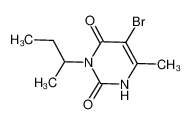






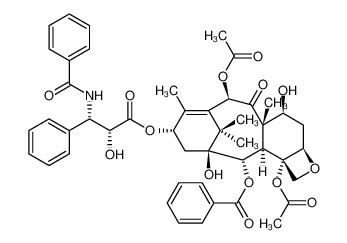

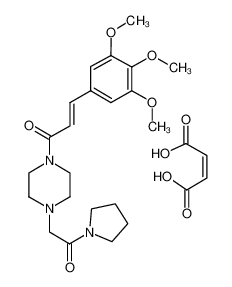
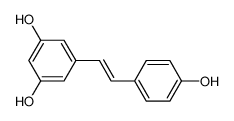

-
-
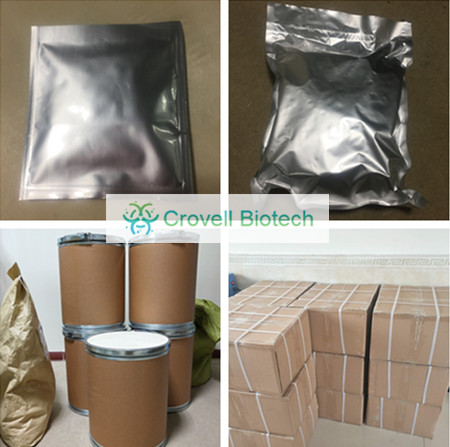
-
-
-

-
-
-

-
-
-

-
-
-

-
-
-

-
-
-
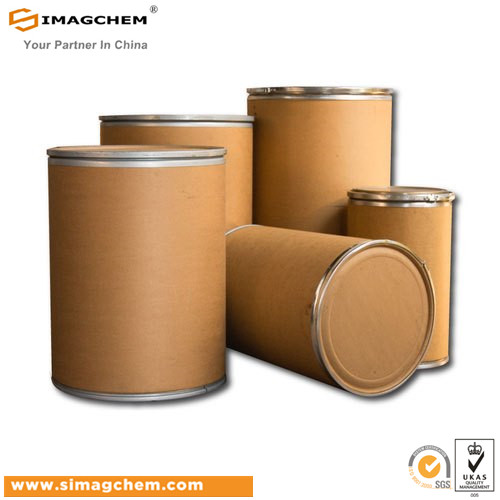
-
-
-

-
-
-

-
-
-

-
More Suppliers>>CHINA
Purity: 99%
Lead Time: 1 Day(s)
Price: -
Baoji Guokang Bio-Technology Co., Ltd
CHINA
Purity: 99%
Lead Time: 5 Day(s)
Price: -
Changzhou Xinxinglian Biotechnology Co., Ltd.
CHINA
Purity: 98%
Lead Time: 7 Day(s)
Price: -
CHINA
Purity: 99.99%
Lead Time: 1 Day(s)
Price: Min $66 /kg
Hangzhou J&H Chemical Co., Ltd.
CHINA
Purity: >97%
Lead Time: 7 Day(s)
Price: -
Hangzhou J&H Chemical Co., Ltd.
CHINA
Purity: 99%
Lead Time: 14 Day(s)
Price: -
Xiamen Zhixin Chemical Co., Ltd.
CHINA
Purity: 99%
Lead Time: 3 Day(s)
Price: -
Henan Coreychem Co.,Ltd
CHINA
Purity: 98%
Lead Time: 2-3 Day(s)
Price: -
Shanghai Jizhi Biochemical Technology Co., Ltd.
CHINA
Purity: 分析標(biāo)準(zhǔn)試劑%
Lead Time: 30 Day(s)
Price: -
Hangzhou DayangChem Co., Ltd
CHINA
Purity: 97%
Lead Time: 7 Day(s)
Price: -